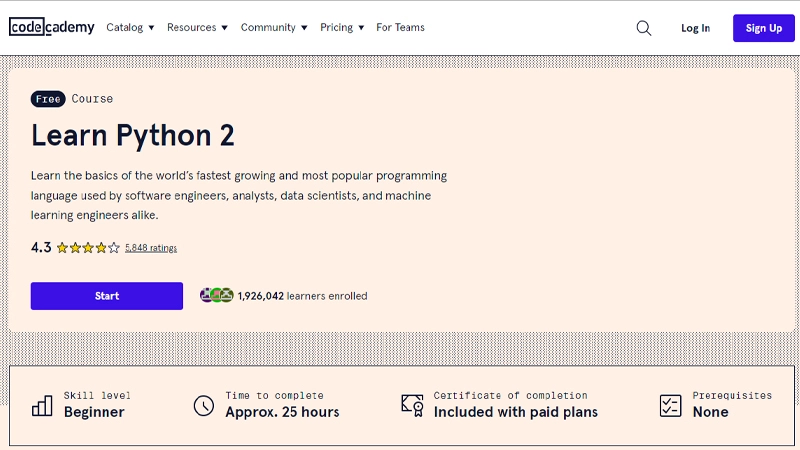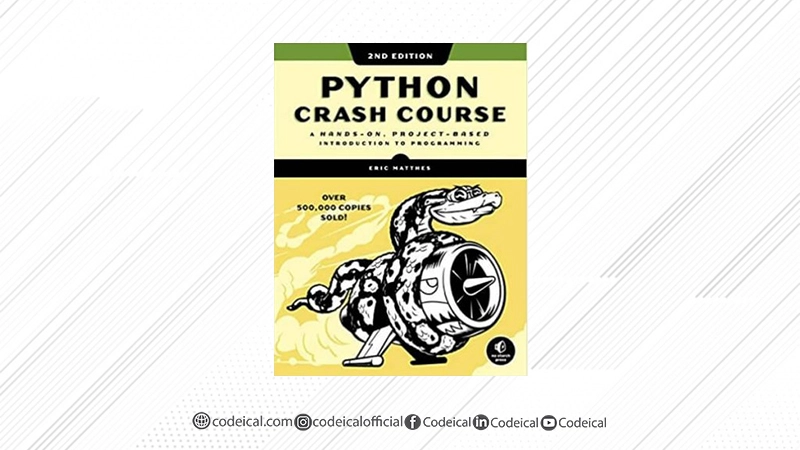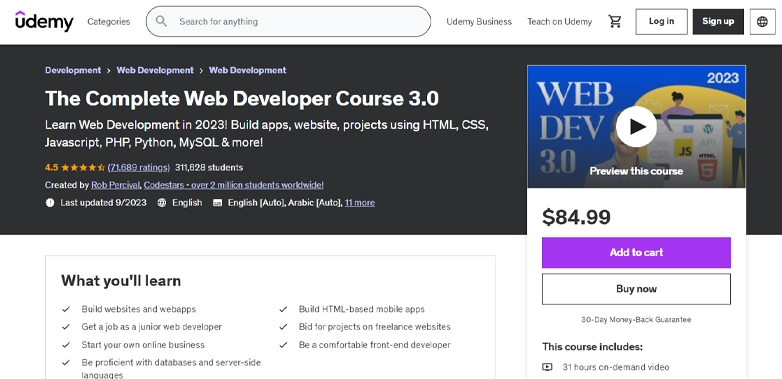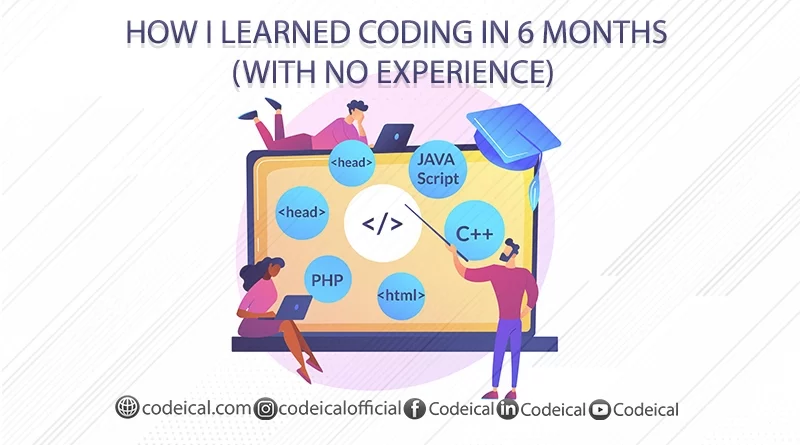How I Learned Coding in 6 Months (With No Experience)
In This Article I will Tell You About ”How I Learned Coding in 6 Months (With No Experience)”.
Is it possible to attain coding proficiency within a mere six-month timeframe? If you’re a beginner in the world of programming, how swiftly can you make strides, and what’s the path to securing a tech career?
As you embark on your coding journey, your goal is likely to become a professional developer in the tech industry. This aspiration is entirely feasible, even if your prior experience is limited. So, if you’re pondering, ‘Can I truly master coding in just half a year?’ – rest assured, you’ve come to the right place.
Within this article, I will divulge the extent of my achievements during my initial six months of coding. You’ll gain insights into each month’s progress and the array of resources I harnessed. For those who are novices in the realm of computer programming and are curious about where you could be in half a year, this article holds the answers you seek.
Without further ado, let’s dive right in!
My coding journey: Where did I start?
Initially, allow me to provide a concise overview of my initial standpoint.
Subsequently, I will comprehensively guide you through the particulars of each month, elucidating the crucial resources I encountered and employed.
Primarily, it is imperative for you to grasp the following:
I embarked on this journey devoid of any prior coding experience, possessing absolutely zero knowledge in the field. Furthermore, I did not hold a degree in computer science, rendering me akin to the majority of novices in the realm of coding, utterly unfamiliar with its intricacies and mechanisms.
Why did I want to learn to code?
I embarked on my journey into the world of programming with a primary goal in mind: to enhance my problem-solving abilities. The desire to delve deeper into the source of my motivation is elaborated in my comprehensive guide on why I embarked on the path of learning to code. In addition to honing my problem-solving skills, I was also enticed by the notion that coding could evolve into a gratifying and engaging pastime. My inclination toward hobbies that facilitate continuous learning and skill improvement made coding an appealing prospect.
The allure of programming lies in its inherent fascination. Consider the following: web developers have the remarkable capacity to conjure valuable creations seemingly out of thin air. For instance, businesses seeking to expand their reach and sales can enlist the services of a web developer to craft an online store. This transformation can potentially open doors to a vast global audience, amplifying their clientele manifold.
To further illustrate, I am an avid enthusiast of the Duolingo mobile application. This free app offers an immersive and gamified platform for acquiring new languages. My daily engagement with Duolingo brings me immense satisfaction, as its value and utility are undeniable. Contemplating the possibility of creating a similar platform in the future through my coding skills is a compelling source of motivation. The prospect of contributing something as valuable as Duolingo to the world fuels my determination and stokes my passion for programming.
How did I find time for learning to code?
Regrettably, the confines of a mere 24 hours per day can be quite disheartening. It’s a sentiment many can relate to, especially if you’re akin to my situation, where life’s demands already occupy a substantial portion of your day.
Nonetheless, if your aspiration truly revolves around mastering the art of coding and evolving into a proficient developer, one inescapable truth remains: you must dedicate time to practice.
In fact, you must devote a significant amount of time to practice.
It’s an irrefutable fact that the more time you invest in learning and honing your coding skills, the more proficient you’ll become.
Personally, I aimed to allocate an hour daily for practice. However, this endeavor proved to be quite challenging, given the demands of a full-time job and a plethora of other interests and commitments, much like what you might be grappling with.
It’s quite possible that your life mirrors mine in certain aspects. Perhaps you, too, find yourself juggling the responsibilities of a job, the needs of a family, and an overwhelming daily to-do list.
Yet, here’s the essential realization:
To witness tangible progress and tangible results, a degree of sacrifice is a requisite component.
So, you may wonder, how did I manage to carve out the time for my coding pursuits? The answer is simple yet profound: I rid myself of anything that consumed my precious time – things that, in hindsight, were entirely dispensable.
Specifically, I parted ways with the indulgence of streaming services like Netflix and the incessant allure of social media applications. They proved to be colossal drains on my productivity and time, an experience I’m certain you may identify with. By eliminating these distractions, I created the space and time necessary to nurture my coding skills and ultimately set myself on the path to becoming a proficient developer.
Month 1:
Choosing my first programming language
When I began my coding journey, I had zero prior technical experience or knowledge. I hadn’t even considered enrolling in a coding course or watching programming tutorials on YouTube.
Hence, the inaugural month commenced by addressing extremely basic inquiries such as:
- What is the true essence of coding?
- What are the daily tasks of developers?
- What’s the reason behind the abundance of programming languages?
- What’s the mechanism behind the functioning of the Internet?
- Which programming language is the right one for me to study?
- Is it better to pursue a full-time or freelance developer career?
- Which online course should be my starting point?
- Is it possible to acquire coding skills using free resources?
Naturally, each of us embarks on distinct learning paths.
Ultimately, your objectives and project preferences shape your choices.
As it happens, there exist no definitive right or wrong actions to take.
The sole crucial factor is your understanding of your intended target.
Once you establish a well-defined objective, you can discern the necessary actions to attain it.
If you are a complete beginner in coding, I recommend perusing my guide detailing the four straightforward steps to commence programming.
Finding the first resources
When I first embarked on my coding journey, I harbored doubts about whether it was the right path for me. Consequently, I hesitated to invest a substantial amount of money in a coding course, mindful of the possibility that I might not complete it.
Hence, I decided to kickstart my learning using freely available online resources. Fortunately, the digital landscape offers an abundance of cost-free coding courses and tutorials. My initial foray into this world began with Codecademy’s complimentary HTML course.
One of the advantages of this learning platform is that their lessons operate within an interactive code editor, eliminating the need to install any software on your computer. To my surprise, I experienced tangible progress in my coding skills at a rapid pace.
If you’re a coding novice, I highly recommend signing up for free on Codecademy to get started.
Choosing my first programming language
At this juncture, a significant mistake occurred: I was uncertain about my future coding project and, consequently, the programming language I should focus on. If you can relate to this situation, don’t fret; many beginners find themselves in a similar predicament. Often, they choose a programming language based on its popularity or because their peers are learning it.
Rather than opting for a trendy programming language, it’s advisable to select one that aligns with the projects you’re genuinely passionate about. For instance, if your goal is to create visually stunning websites, you should prioritize learning the relevant languages. Likewise, if you aim to develop mobile apps, focus on the appropriate programming language.
In my case, lacking better guidance, I ventured into learning the Python programming language. Python was highly acclaimed, recommended by many, and it appeared to be an excellent choice for beginners. I commenced my journey by enrolling in Codecademy’s free Python 2 course.

After a few exercises, I was captivated; learning Python proved to be an enjoyable experience. Python is known for its beginner-friendly nature and incredible versatility. It empowers you to craft web applications, design video games, analyze data, and delve into machine learning projects. For those unfamiliar with its merits, I recommend reading my guide on why Python is an excellent first programming language.
My enthusiasm for learning Python led me to seek additional resources. Fortunately, I stumbled upon a copy of “Python Crash Course” at my local bookstore. This beginner-level Python guide is replete with practical projects and hands-on exercises.

The book’s initial section imparts knowledge of Python syntax and how the language operates. The subsequent part comprises three real-world projects that provide ample opportunities to hone your skills. For more details about my experience with this book, you can read my account here.
By the end of my first month, I had completed “Python Crash Course” and even created a fully functional web application following the guided project tutorial in the book’s second part. While my project was relatively simple, it marked the realization of a real-world web application.
Here are the resources I utilized:
- Codecademy: Learn HTML and CSS
- Codecademy: Learn Python 2
- Book: “Python Crash Course”
Month 2:
Learning computer science basics
At that moment, I found immense pleasure in learning to code. I made remarkable advancements, but I also struggled with a lack of clear direction. Uncertainty loomed over the ultimate purpose of my coding skills. Yet, my curiosity drove me to explore this journey further, seeking opportunities to hone my skills. Despite the absence of a well-defined plan or strategy, my motivation remained unwavering, compelling me to persist.
Understanding the importance of computer science skills
My primary challenge revolved around the fact that, whenever I delved into a new subject, I encountered a multitude of fresh inquiries demanding my attention. Due to my absence of a background in computer science, I found myself bewildered by the technical terminology and the intricacies of hardware. Most of these inquiries pertained to the realm of computer science, necessitating that I grasp at least some fundamental computer science concepts to gain insight into the inner workings of programming.
I want to emphasize the following:
If you are genuinely committed to mastering coding, it is imperative to comprehend the inner workings of a computer. This knowledge is the sole path to understanding how to structure your code and, by extension, your programs as a whole. If you are just embarking on your coding journey, you may discover this post about grasping the basics of computer science quite valuable!
Finding an online Computer Science course
I discovered a free online course titled “Intro to Computer Science” on Udacity, which happened to use Python as the primary programming language, making it especially convenient for me. The course’s main project involved building a simple search engine, which I found quite captivating as a beginner. This allowed me to further hone my Python skills while simultaneously gaining a foundational understanding of computer science—an ideal combination for my learning journey.
Around the same time, I came across another excellent course on edX.org called “Introduction to Computer Science” (also known as CS50) offered by Harvard. The video lectures for this course were exceptionally accessible, presenting complex concepts in a highly engaging manner, which made learning all the more interesting.
After completing two months of these courses, my confidence in using Python to tackle problems significantly increased. Moreover, I had developed a better grasp of what transpired within a computer as my code executed—an unexpected bonus!
Resources I utilized:
- Continued with “Python Crash Course”
- “Intro to Computer Science” on Udacity
- “Introduction to Computer Science” on edX
Month 3:
Starting to learn new programming languages
For the initial two months of my coding journey, I deliberately concentrated solely on mastering a single programming language. This approach proved highly effective for me, and I wholeheartedly advise newcomers to coding to adopt the same strategy. Narrowing your focus to a single language when seeking solutions makes it easier to maintain clarity of thought.
Going from back-end to front-end
I realized it was high time to enhance my Python back-end skills by acquiring some front-end expertise. I delved into HTML right from day one of the first month and began my journey with CSS. Now, I’m ready to take a deeper dive into these technologies.
I had already been introduced to HTML, CSS, and Bootstrap through my experience with Python Crash Course’s web app project. To further my knowledge, I aimed to find a high-quality online course that would also cover the fundamentals of other frequently used web development languages.
Starting a web development course
Among all the resources I explored, one in particular caught my attention: Udemy’s “The Complete Web Developer Course 3.0.”

This course provides a comprehensive introduction to various essential web development technologies, including HTML, CSS, JavaScript, jQuery, Bootstrap, WordPress, Python, PHP, and APIs, among others.
It’s a fantastic investment, especially when Udemy offers special promotions, often with discounts of up to 95%.
Time passed quickly, and before I knew it, another month had arrived, and I had just embarked on my course journey.
By the end of the third month, I had completed the HTML and CSS modules and had a fantastic experience replicating existing websites and mastering CSS.
Resources I utilized:
Month 4:
Discovering WordPress and launching my own website
After three months of learning coding, my enthusiasm remained high due to the rapid progress I was making. I understood that mastering a programming language would take time, and I was in no rush. During the month, I dedicated myself to intensive practice of HTML and CSS while also commencing new modules in my web development course.
Learning WordPress
After successfully completing the WordPress unit in my web development course, I invested significant time honing my CSS skills over the past few weeks. This effort made me realize that WordPress was a perfect solution.
The astonishing simplicity of bringing a website to life using WordPress compelled me to expedite the launch of my own site. My mind was brimming with thoughts and ideas, and I believed that documenting my programming journey through writing would provide structure and help me monitor my progress. Given my passion for writing, creating a blog seemed the most fitting path.
To make my website accessible to the world, I acquired a domain and hosting plan. Initially, my website was a simple page with a blog and some information about myself. In the future, I planned to expand it by showcasing completed projects and taking on small web development assignments from my first real clients.
If you share an interest in WordPress, be sure to check out my post on why I find it so appealing in the field of web development!
Getting Started with a WordPress Online Course
My fascination with WordPress led me to delve deeper, and I decided to enroll in a new Udemy course. Luckily, they had a fantastic promotion, making the courses highly affordable.
The course I ultimately chose was “The Complete WordPress Website Business Course.” It essentially takes you from being a novice in web page creation to building various types of websites with WordPress.
Ultimately, the course’s goal is to equip you with the skills needed to kickstart your own WordPress web development business. It’s an ambitious goal for an online course, but I managed to achieve just that thanks to this particular course!
Resources I Utilized:
Month 5:
Starting with blogging and learning JavaScript
The fifth month primarily revolved around acquiring fresh web development skills. My blog served as a valuable tool for maintaining focus, as well as for monitoring my learning journey. Expressing my experiences through writing proved to be an effective method for processing all the knowledge I had accumulated up to that point.
Nevertheless, I didn’t perceive myself as particularly proficient in any of the programming languages I had familiarized myself with thus far. However, there was no rush. When I reflected on my progress since the first month, I realized how far I had already come.
To supplement my HTML and CSS expertise, I delved into the fundamentals of JavaScript via my Udemy web development course. Additionally, I invested a significant amount of effort into my WordPress course.
Month 6:
Revisiting Python, building my first portfolio websites
The previous month has concluded, and during that period, I devoted my efforts to refining my skills in Python, Django, WordPress, Bootstrap, and even delved into some basic PHP.
While immersing myself in my web development course, I successfully wrapped up a significant project I had initiated using Python and Django. While the project’s backend was mostly completed in the first month, my primary focus in the last month was on improving its visual appeal and user-friendliness.
Furthermore, I made progress in my comprehension of WordPress, employing it to create a personal portfolio website. I carefully chose a few smaller projects to showcase to visitors and kept them updated as I tackled more complex and demanding tasks.
All in all, after half a year of coding education, it felt as though I had just begun my coding journey. I had gained an initial glimpse into various aspects, but I was merely starting my exploration.
Resources I used:
- The Complete Web Developer Course 3.0 (Udemy): Bootstrap, PHP
- The Complete WordPress Website Business Course (Udemy)
- Python Crash Course revisited for Django
Final thoughts: Learning coding for six months
- Reflecting on six months of coding: After dedicating half a year to learning how to code, I’m wondering how much progress I’ve made.
- Building a foundation in programming languages: While I can’t claim mastery in any of the programming languages I’ve studied, I consider this journey a promising beginning.
- What you can achieve in six months of coding: In just half a year, it’s feasible to become familiar with various programming languages and technologies, all while completing some personal projects along the way.
- Top resources and courses for a six-month coding journey: As a quick reference, here are my top recommended resources and courses to kickstart your six-month coding adventure:
- The Complete Web Developer Course 3.0 on Udemy: This comprehensive course encompasses all the essentials, taking you from basic HTML and CSS to advanced concepts in both front-end and back-end development.
- The Complete WordPress Website Business Course on Udemy: If you’re interested in using WordPress as a content management system and potentially becoming a professional WordPress web designer, this course is a great choice.
- Python Crash Course by Eric Matthes: If you’re new to coding, consider exploring Python with this fantastic book from No Starch Press. It equips you with the knowledge needed to create web applications, perform data analysis, and develop engaging 2D games using Python and its various modules and libraries.
- Sharing your thoughts on the six-month coding journey: If you found this post about the six-month coding experience interesting, please leave a comment below!
- Request for sharing helpful tips: If you found the tips in this article useful, please consider sharing it with others. Your support is greatly appreciated!

